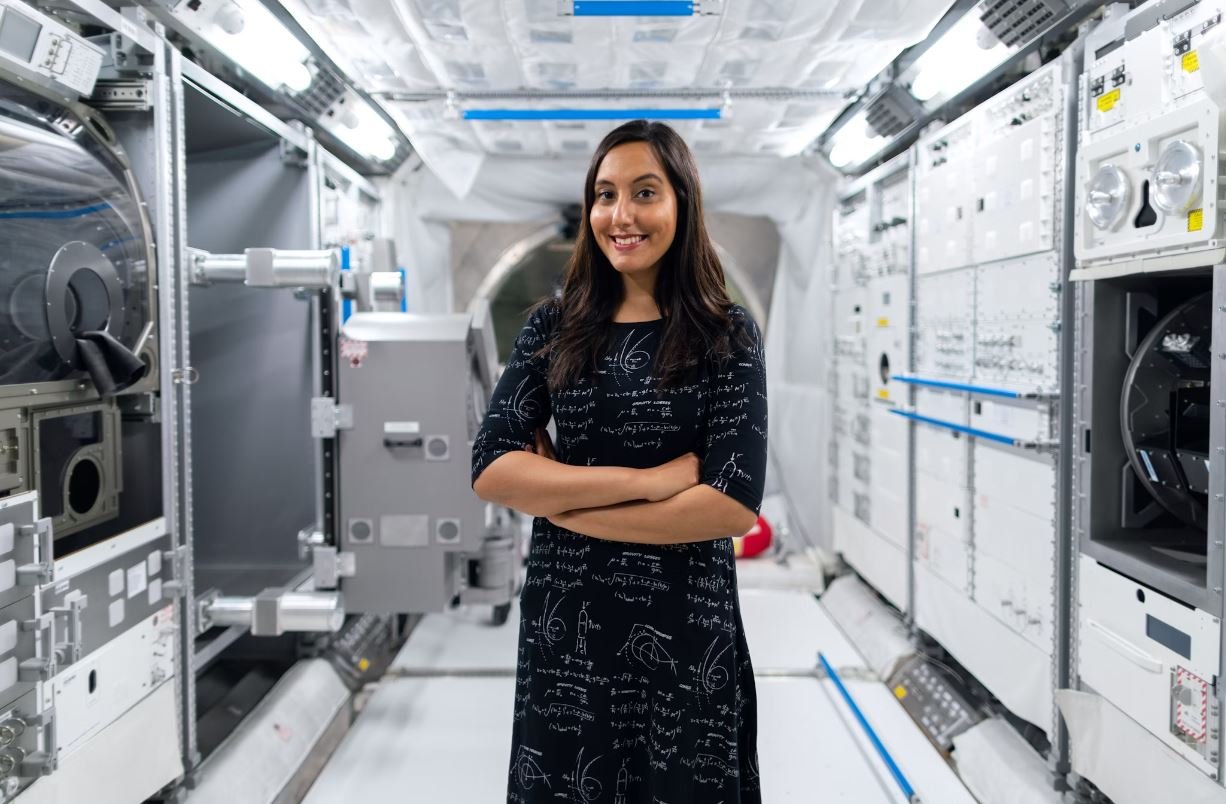What Is Tracks in High School?
The concept of tracks in high school refers to the different academic pathways or programs that students can choose to specialize in during their high school years. These tracks or programs are designed to offer students a more focused and specialized education tailored to their interests and future career goals.
Key Takeaways:
- Tracks in high school are academic pathways that allow students to specialize in specific subjects or areas of study.
- Tracks aim to provide students with a more focused and specialized education matching their interests and future career goals.
- There are various types of tracks offered, such as STEM, arts, humanities, and vocational programs.
- Students can choose a track based on their personal interests, strengths, and ambitions.
The purpose of tracks is to help students better prepare for their future by providing them with in-depth knowledge and skills related to their chosen field of study. By selecting a specific track, students can gain a competitive edge when applying to colleges or entering the workforce, as they will have developed a deeper understanding of their chosen field.
*For example, a student who chooses the STEM track can take advanced courses in subjects like physics, chemistry, and mathematics, and participate in science fairs or research projects.
Types of Tracks in High School:
- STEM Track:
- Focuses on science, technology, engineering, and mathematics.
- Prepares students for careers in fields like engineering, computer science, medicine, and research.
- Arts Track:
- Emphasizes creativity and artistic expression.
- Offers courses in visual and performing arts, such as painting, music, theater, and dance.
- Humanities Track:
- Focuses on subjects like literature, history, philosophy, and social sciences.
- Prepares students for careers in fields like law, journalism, education, and social work.
- Vocational Track:
- Provides hands-on training in practical skills and trades.
- Prepares students for careers in fields like automotive technology, culinary arts, cosmetology, and construction.
Students can choose a track based on their personal interests, strengths, and aspirations. It is important to carefully consider their future goals and determine which track aligns most closely with those goals. Additionally, students should evaluate the resources and opportunities provided by their school for each track.
*Choosing a track does not mean students are limited to that specific field in the future, but rather it provides them with a foundation of knowledge and skills that can be applied in a variety of professional paths.
Benefits of Choosing a Track:
- Specialized Education: Tracks offer a more concentrated and specialized curriculum in specific subjects, allowing students to delve deeper into their areas of interest.
- Enhanced Skills: Students gain valuable knowledge and practical skills relevant to their chosen track, which can increase their employability or improve their chances of admission to specialized college programs.
- Networking Opportunities: Tracks often provide students with opportunities to connect with professionals and experts within their chosen field, fostering valuable connections for future endeavors.
- Focused Career Preparation: By choosing a specific track, students can focus on acquiring the necessary skills and knowledge for their desired career path, leading to a smoother transition into the workforce.
Overall, tracks in high school are designed to provide students with specialized education, preparing them for their future goals and careers. By choosing a track, students can gain a deeper understanding of their chosen field, develop valuable skills, and increase their competitiveness in the college admissions process or job market.
Track Comparison – Average Salaries:
| Track | Average Salary |
|---|---|
| STEM | $75,000 |
| Arts | $45,000 |
| Humanities | $50,000 |
| Vocational | $55,000 |
Track Comparison – College Acceptance Rates:
| Track | Acceptance Rate (%) |
|---|---|
| STEM | 85 |
| Arts | 70 |
| Humanities | 75 |
| Vocational | 80 |
*Table data is for illustrative purposes only and may not reflect current industry trends or college acceptance rates.
Overall, tracks can provide high school students with a focused and specialized education, preparing them for their preferred career paths. By carefully considering their interests, strengths, and goals, students can make an informed decision when choosing a track that best aligns with their aspirations.

Common Misconceptions
Misconception 1: Tracks in High School are only for advanced students
One common misconception about tracks in high school is that they are exclusively designed for advanced or gifted students. However, tracks are actually meant to cater to students with different interests and abilities.Each track offers specialized coursework and opportunities for students to explore their passions and talents.
- Tracks provide a variety of learning options for students, regardless of their academic level.
- Tracks allow students to pursue their interests and career goals from an early stage.
- Tracks can offer a more personalized learning experience and closer interaction with teachers.
Misconception 2: Choosing a track in high school restricts future career options
Another misconception surrounding tracks in high school is that once you choose a specific track, it limits your career choices in the future. However, tracks provide a foundation and focus in a particular field, but they don’t completely eliminate other options.
- Tracks develop valuable skills that can be applied in many different career paths.
- Students can always switch tracks or explore different fields in higher education or through further training.
- Often, tracks expose students to various careers related to the chosen field, helping them make informed choices.
Misconception 3: Students in the standard track are not as successful as those in advanced tracks
There is a common misconception that students who are placed in the standard track are not as successful as those in advanced tracks. However, success is not solely determined by the track a student is in, but by their dedication, determination, and personal growth.
- Students in the standard track can still achieve excellent academic performance and pursue higher education.
- Success is subjective and can be measured by personal growth, skills development, and achieving individual goals.
- Many successful individuals have emerged from the standard track and achieved great accomplishments in their fields.
Misconception 4: All students in a track share the same abilities and interests
Some people mistakenly assume that all students within a specific track have similar abilities and interests. However, tracks are designed to accommodate a diverse range of students with different skills, strengths, and aspirations.
- Each track often contains students with a broad range of abilities, who can support and learn from each other.
- Within a track, students can further specialize and have flexibility to choose specific courses aligned with their interests.
- Tracks provide opportunities for collaboration and expose students to various perspectives and talents.
Misconception 5: Tracks limit social interactions between students
It is commonly misunderstood that tracks in high school restrict social interactions between students, leading to limited opportunities for friendship and collaboration. However, tracks can actually foster a sense of community and provide opportunities for students to connect.
- Students within the same track often have shared interests and passions, which can lead to stronger bonds and friendships.
- Tracks can create a supportive environment where students feel connected to their peers who share similar academic goals.
- Many schools offer extracurricular activities that bring students from different tracks together, promoting social interactions.

What Is Tracks in High School?
In high school, students often have the option to choose from a variety of tracks or pathways to help them focus their studies and pursue their interests. These tracks can provide a more specialized education and prepare students for future academic or career opportunities. In this article, we will explore and analyze some interesting points about different tracks offered in high schools.
1. Performing Arts Track
The performing arts track is designed for students with a passion for music, theater, and dance. It provides comprehensive training in various performing arts disciplines, including acting, vocal or instrumental music, and dance. Students can participate in school productions and competitions.
| Performing Arts Track | Percentage of Students |
|---|---|
| Music | 25% |
| Theater | 30% |
| Dance | 20% |
| Combined | 25% |
2. STEM Track
The STEM (Science, Technology, Engineering, and Mathematics) track focuses on building strong analytical skills and preparing students for careers in these fields. It offers advanced coursework in math, physics, chemistry, and computer science, fostering critical thinking and problem-solving abilities.
| STEM Track | Percentage of Students |
|---|---|
| Science | 35% |
| Technology | 20% |
| Engineering | 25% |
| Mathematics | 20% |
3. Business and Entrepreneurship Track
The business and entrepreneurship track focuses on equipping students with the knowledge and skills required to succeed in the dynamic world of business. It offers courses in business management, finance, marketing, and economics, empowering students to develop innovative business ideas.
| Business and Entrepreneurship Track | Percentage of Students |
|---|---|
| Business Management | 30% |
| Finance | 15% |
| Marketing | 25% |
| Economics | 30% |
4. Health Sciences Track
The health sciences track is ideal for students interested in pursuing careers in healthcare. It provides in-depth knowledge of biology, anatomy, physiology, and other health-related subjects. Students may have opportunities for internships or shadowing experiences at hospitals or clinics.
| Health Sciences Track | Percentage of Students |
|---|---|
| Biology | 30% |
| Anatomy | 20% |
| Physiology | 25% |
| Others | 25% |
5. Visual Arts Track
The visual arts track nurtures students’ creativity and artistic abilities. It offers courses in drawing, painting, sculpture, photography, and graphic design. Students can showcase their artwork in exhibitions or explore their passion for various artistic mediums.
| Visual Arts Track | Percentage of Students |
|---|---|
| Drawing | 35% |
| Painting | 20% |
| Sculpture | 15% |
| Photography | 15% |
| Graphic Design | 15% |
6. Sports Track
The sports track allows students to pursue their athletic abilities while balancing their academics. It offers specialized training in various sports, such as basketball, soccer, swimming, volleyball, and track and field. Students may have opportunities to compete at the regional or state level.
| Sports Track | Percentage of Students |
|---|---|
| Basketball | 20% |
| Soccer | 30% |
| Swimming | 15% |
| Volleyball | 15% |
| Track and Field | 20% |
7. Humanities Track
The humanities track focuses on developing students’ critical thinking and analytical skills through studying subjects like literature, history, philosophy, and sociology. It encourages students to explore the complexities of human culture and identity.
| Humanities Track | Percentage of Students |
|---|---|
| Literature | 30% |
| History | 25% |
| Philosophy | 20% |
| Sociology | 25% |
8. Culinary Arts Track
The culinary arts track is designed for students passionate about food and culinary techniques. It offers classes in cooking, baking, menu planning, and food safety. Students may gain practical experience by working in school cafeterias or local restaurants.
| Culinary Arts Track | Percentage of Students |
|---|---|
| Cooking | 40% |
| Baking | 25% |
| Menu Planning | 15% |
| Food Safety | 20% |
9. Advanced Placement (AP) Track
The Advanced Placement (AP) track provides students with the opportunity to take college-level courses and earn college credits while in high school. It offers a wide range of subjects, including AP English, AP Calculus, AP Biology, AP Psychology, and more.
| Advanced Placement (AP) Track | Percentage of Students |
|---|---|
| English | 20% |
| Calculus | 25% |
| Biology | 15% |
| Psychology | 40% |
10. Vocational Track
The vocational track focuses on providing students with hands-on training and skills required for specific careers. It offers programs in fields such as automotive technology, cosmetology, construction, and culinary arts. Students may obtain industry certifications upon completion.
| Vocational Track | Percentage of Students |
|---|---|
| Automotive Technology | 30% |
| Cosmetology | 15% |
| Construction | 25% |
| Culinary Arts | 30% |
High schools offer a plethora of tracks catering to diverse interests and career aspirations. By providing specialized education and opportunities, these tracks empower students to pursue their passions and develop skills that will shape their future. Whether it be in the performing arts, STEM fields, business, health sciences, visual arts, sports, humanities, culinary arts, advanced placement, or vocational tracks, there are numerous possibilities for students to explore and excel!
Frequently Asked Questions
What is Tracks in high school?
Tracks in high school refer to specialized programs or academic pathways that allow students to focus on specific subjects or career goals. These tracks typically have a set curriculum and specific requirements.
How many tracks are available in high school?
The number of tracks available in high school can vary depending on the educational institution. Some schools may offer a few tracks, while others may have a wide range of options to choose from.
What are the benefits of choosing a track in high school?
Choosing a track in high school can provide several benefits. It allows students to explore their interests and passions in a particular field, gain in-depth knowledge, develop relevant skills, and potentially set a foundation for further studies or a future career.
Can students switch tracks in high school?
The ability to switch tracks in high school depends on the policies and availability of resources within the educational institution. Some schools may allow students to switch tracks, while others may require students to commit to a track for a specific duration.
How do I choose which track is right for me?
Choosing the right track in high school involves considering your interests, talents, and future goals. It is advisable to research the available tracks, speak with teachers or counselors, and learn about the curriculum and potential career paths associated with each track before making a decision.
Are tracks in high school only for academic subjects?
No, tracks in high school can encompass a variety of subjects, including both academic and vocational areas. Some common tracks may include science, arts, business, technology, engineering, health sciences, and more.
Can I pursue multiple tracks simultaneously in high school?
It depends on the policies of the specific educational institution. Some schools may allow students to pursue multiple tracks simultaneously, while others may require students to focus on one track at a time.
What happens if I don’t choose a track in high school?
If you don’t choose a track in high school, you may follow a general or standard curriculum that covers a broad range of subjects. This allows you to have a more well-rounded education without specializing in a particular area.
Do all high schools have tracks?
No, not all high schools have tracks. The availability of tracks may vary depending on the educational system, school district, and the resources available in the specific high school.
How does choosing a track in high school affect college applications?
Choosing a track in high school can demonstrate your dedication and passion in a specific field, which can be appealing to college admissions committees. It can also provide you with unique experiences or opportunities that set you apart from other applicants.




